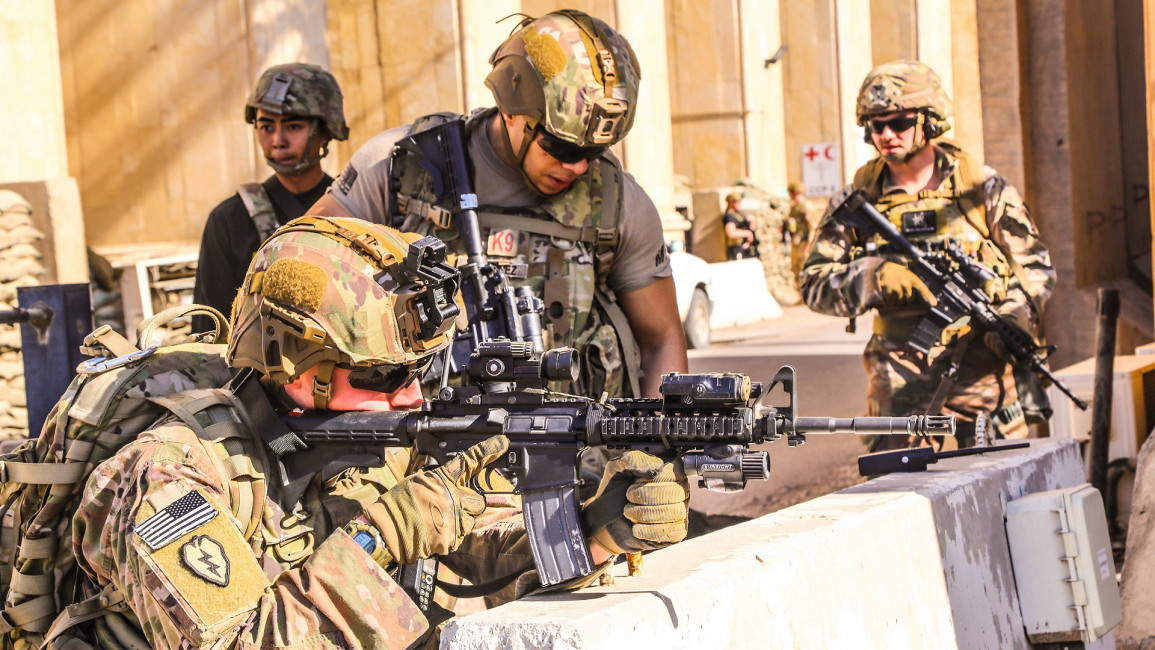US troops in Middle East to stay for 'quite a while', says top US commander
Despite President Donald Trump's pledge to bring troops home, the top US commander in the Middle East on Thursday said the most recent forces to enter the region could be there for "quite a while".
"You're here because I requested that you come," Marine General Frank McKenzie told sailors and Marines aboard the USS Bataan amphibious assault ship, his voice booming over the ship's loudspeaker.
"I'm not sure how long you're going to stay in the theater. We'll work that out as we go ahead. Could be quite a while, could be less than that, just don't know right now."
The Bataan and two other US warships moved into the Middle East on January 11. By Thursday, they were in the north Red Sea, roughly 50 miles south of the Sinai Peninsula. They are the latest additions to America's troop presence in the region. Since May, their numbers have grown from about 60,000 to more than 80,000.
Twitter Post
|
Those increased deployments came despite two significant hurdles: Trump's persistent pledge to end the wars and bring troops home, and US Defense Secretary Mark Esper's insistence that US forces be shifted to the Asia-Pacific as a bulwark against threats from China.
In making its case for troops in the Middle East, the US military points to Iran's January 8 launch of as many as two dozen ballistic missiles at two Iraqi bases where US troops were stationed. The attack was in retaliation for a US drone strike that killed Qasem Soleimani, Iran's top general.
"Iran continues to pose a very real threat," McKenzie told reporters traveling with him to the Bataan.
"I do believe that they are deterred right now, at least from state-on-state actions by our response. And so I think that while that threat remains, I think we're in a period where they're certainly not seeking to escalate anything."
He added, however, that Iranian proxy forces, who may strike with or without direction from Iranian leaders, still present a threat. He noted that Iranian attacks against Saudi Arabia last fall came as a surprise.
"Iran is very hard to read," McKenzie said. "So I would say the fact that things are quiet for a while does not mean that necessarily things are getting better."
Read more: White House considering dramatic expansion of Trump's US travel ban
To help deter additional Iranian attacks, McKenzie asked to have the USS Bataan Amphibious Ready Group, which includes two other ships and a Marine Expeditionary Unit, divert from their original mission in Europe and go through the Suez Canal into the Red Sea. There are about 2,500 Marines and 1,500 sailors on the three ships.
That decision is the latest move since May to bolster the American presence in the region, including the deployment of the 1st Brigade, 82nd Airborne division, to Kuwait and Iraq after the US Embassy in Baghdad was attacked.
The US also moved an aircraft carrier into the region last year. It has left and was replaced the USS Harry S. Truman.
The Pentagon has sent additional fighter jets, bomber aircraft, and Patriot missile batteries to the Middle East to provide additional security for US troops and allies and as a show of force to deter attacks by Iran.
Those moves have increased the US troop strength in the region to more than 83,000, based on numbers from several US officials and other government agencies that track military movements.


![Widespread famine is imminent in Gaza [Getty Images]](/sites/default/files/styles/image_330x185/public/2024-03/GettyImages-2015647000.jpg?h=199d8c1f&itok=mJWWP_Td)
